Palabras clave:
aprendizaje social; aversión; condicionamiento, cloruro de litio.Resumen
Los rumiantes presentan un comportamiento gregario muy desarrollado. Este comportamiento es uno de los factores que más peso tiene en el aprendizaje de dietas, junto a la experiencia con el alimento (condicionamiento). La dinámica de pastoreo en grupo determina un conjunto de reglas a seguir al momento de alimentarse, los animales más jóvenes tienden a seguir a los más viejos, y estos, los guían hacia las mejores pasturas. A su vez, dentro de las categorías de igual jerarquía, el aprendizaje de la dieta se da por presión social. En tanto que el condicionamiento se basa en las consecuencias luego del consumo del alimento. En este trabajo pretendemos aproximarnos al aprendizaje asociativo de dietas en rumiantes de forma individual (aversión condicionada) y grupal (transmisión de condicionamientos) con el fin de aplicarlo al consumo de plantas tóxicas. Para esto se hace una revisión del uso del cloruro de litio asociado a alimentos tóxicos para evitar su consumo, para luego revisar lo que se conoce sobre la transmisión social de condicionamientos en rumiantes. Si bien aún falta mucha investigación, conocer ambas herramientas puede resultar muy útil para el manejo de rumiantes en predios donde hay alimentos que pueden resultar tóxicos.
Descargas
Citas
BURRITT, E. & PROVENZA, F. 1990. Food aversion learning in sheep: persistence of conditioned taste aversions to palatable shrubs (Cercocarpus montanus and Amelanchier alnifolia). Journal of nimal Science 68: 1003-1007.
CIBILS, A., HOWERY, L., RUYLE, G. 2008. Social models fail to induce diet and feeding site avoidance in naive yearling steers. Animal 2(2): 255-264.
CHOLERIS, E., GUO, C., LIU, H., MAINARDI, M., VALSECCHI, P. 1997. The effect of demostrator age and number on duration of socially-induced food preferences in house mouse. Behavioural
processes 41: 69-77.
DE LA CRUZ, F. 2008. Modelos multinivel. Revista Peruana de Epidemiología 12(3): 1-8.
DUMONT, B. & BOISSY, A. 1999. Relations socialeset comportement alimentaire au paturage. INRA Production Animales 12: 3-10.
DUNCAN, A. & YOUNG, S. 2002. Can goats learn about foods through conditioned food aversions and preferences when multiple food options are simultaneously available? Journal of Animal Science 80: 2091-2098.
FORBES. J. M. 1995. Learning about Food: Preferences. En J. M. Forbes (Eds) Voluntary food intake and diet selection in farm animals. England, CABI. 448pp.
GRUSEC, J. 1992. Social learning theory and developmental psychology: the legacies of Robert Sears and Albert Bandura. Developmental Psychology 28 (5): 776-786.
HEYES, C., JALDOW, E., NOKES, T., DAWSON, G. 1994. Imitation in rats (Rattusnorvegicus): the role of demostrator action. Behavioural Processes 32: 173-182.
HEYES, C. 1993. Imitation, culture and cognition. Animal Behavior 46: 999-1010.
JOLLY, R. 1993. Lysosomal storage diseases in livestock. Veterinary Clinics of North America. Food Animal Practice 9: 41-53.
JUSTEL, N. & RUETTI, E. 2012. La memoria del sabor. Revista Argentina de Ciencias del Comportamiento 4(1): 31-43.
KRAUSE, J., LUSSEAU, D., JAMES, R. 2009. Animal social networks: an introduction. Behavioral Ecology and Sociobiology 63: 967-973.
LALAND, K., RICHERSON, P., BOYD, R. 1996. Developing a theory of animal social learning. En C Heyes & B Galef, Jr. (Eds) Social Learning In Animals: The Roots of Culture. New York: Academic Press. 405pp.
LAUNCHBAUGH, K. & PROVENZA, F. 1994. The effect of flavor concentration and toxin dose on the formation and generalization of flavor aversions in lambs. Journal of Animal Science 72: 10-13.
LEWIS, M., HAVILAND-JONES, J., FELDMAN, E. 2008. Handbook of emotions. USA, The Guilford Press. 864pp.
LYNCH, J. & BELL, A. 1987. The transmision from generation to generation in sheep of the learned behaviour for eating grain supplements. Australian Veterinary Journal 64 (9): 291-292.
MANTECA, X. 2009. Comportamiento Social. En X Manteca (Ed.), Etología Veterinaria. Multimédica Ediciones Veterinarias: Barcelona. 308pp.
MAZZORRA, C., FONTES, D., CUBILLA, N., DE VEGA, A. 2009. Estrategias para modificar el consumo voluntario y la selección de alimentos de los pequeños rumiantes en pastoreo. Revista Cubana de Ciencias Agrícolas 43 (4): 379-385.
MIRZA, S. & PROVENZA, F. 1994. Socially induced food avoidance in lambs: direct or indirect maternal influence? Journal of Animal Science 72: 899-902.
NACHMAN, M. 1970. Learned taste and temperature aversions due to lithium chloride sickness after temporal delays. Journal of Comparative and Physiological Psychology 73(1): 22-30.
NICOL, C. 1995. The social transmission of information and behavior. Applied Animal Behaviour Science 44: 79-98.
PIEMONTESI, S. 2010. Procesos en neurociencia social cognitiva y afectiva para la comprensión e interacción social: un marco integrador. Revista Argentina de Ciencias del Comportamiento 2(3): 30-44.
PFISTER, J. & PRICE, K. 1996. Lack of maternal influence of lamb consumption of locoweed (Oxytropissericea). Journal of Animaml Science 74: 340-344.
PFISTER, J., STEGELMEIER, B., CHENEY, C., RALPHS, M., GARDNER, D. 2002. Conditioning taste aversions to locoweed (Oxitropissericea) in horses. Journal of Animal Science 80: 79-83.
POSADAS-ANDREWS, A. & ROPER, T. 1983. Social transmission of foodpreferences in adult rats. Animal Behaviour 31: 265-271.
PROVENZA, F. & BALPH, D. 1988. Development of dietary choice in livestock on rangelands and its implications for management. Journal of Animal Science 66: 2356-2368.
PROVENZA, F. & BURRIT, E. 1991. Socially induced diet preference ameliorates condiotioned food aversion in lambs. Applied Animal Behaviour Science 31: 229-236.
PROVENZA, F. 1996. Acquired aversions as the basis for varied diets of ruminants foraging on rangelands. Journal of Animal Science 74: 2010-2020.
QIU, J. & LIN, Z. 2011. A framework for exploring organizational structure in dynamic social network. Decision Support System 51: 760-771.
RALPHS, M. & OLSEN, J. (1990). Adverse influence of social facilitation and learning context in training cattle to avoid eating larkspur. Journal of Animal Science 68: 1944-1952.
RALPHS, M. & OLSEN, J. 1992. Comparison of larkspur alkaloid extract and lithium chloride in maintaining cattle aversion to larkspur in the field. Journal of Animal Science 70: 1116-1120.
RALPHS, M. & CHENEY, C. 1993. Influence of Cattle age, lithium chloride dose level, and food type in the retention of food aversions. Journal of Animal Science. 71: 373-379.
RALPHS, M., GRAHAM, D., JAMES, L.1994. Social facilitation influences cattle to graze locoweed. Journal of Range Management 47: 123-126.
RALPHS, M. & PROVENZA, F. 1999. Conditioned food aversions: principles and practices, with especial reference to social facilitation. Proceedings of Nutrition Society 58: 813-820.
RIET-CORREA, F. & MÉNDEZ, M. 1992. Introducción al estudio de las plantas tóxicas. Veterinaria (Uruguay) 28: 24-27.
RUIZ, P. & VERDES, J. M. 2010. Mediación social en el consumo de alimentos en ovinos: condicionamiento jerárquico por edad como herramienta para controlar la dieta en rumiantes no emparentados en pastoreo. Revista Argentina de Ciencias del Comportamiento 2(3): 14-20.
SAINT-DIZIER, H., LEVY, F., FERREIRA, G. 2007. Influence of the mother in the Development of flavored-food preference in lambs. Developmental Psychobiology 49: 98-106.
SOWELL, F., MOSLEY, J., BOWMAN, J. 1999. Social behavior of grazing beef cattle: implication for management. Journal of Animal Science 77 (suppl): 1-6.
THORHALLSDOTTIR, A., PROVENZA, F., BALPH, D. 1990. Social influence on conditioned food aversions in sheep. Applied Animal Behaviour Science 25: 25- 33.
WHITEHEAD, H. 1997. Analysing animal social structure. Animal Behaviour 53:1053-1067.
WELZL, H., D´ADAMO, P., LIPP, H. 2001. Conditioned taste aversion as a learning and memory paradigm. Behavioural Brain Research 125: 205-213.
WEY, T., BLUMSTEIN, D., SHEN, W., JORDAN, F. 2007. Social network analysis of animal behaviour: a promising tool for the study of sociality. Animal Behaviour 75: 333-344.
ZENTALL, T. & LEVINE, J. 1972. Observational learning and social facilitation in the rat. Science 178: 1220-1221.





